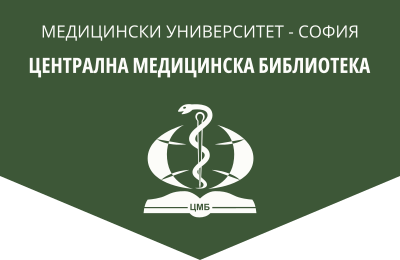Capabilities of [18F]FDG-PET/CT imaging in patients with multiple myeloma referred to staging and restaging due to suspected progression
Medical Review (Med. pregled), 2024, 60(5), 44-50.
T. Stoeva1,2, Zh. Dancheva1,2, M. Dyankova1,2, S. Chausheva1,2, Ts. Yordanova1,2, B. Chaushev1,3
1 Nuclear Medicine Department, UMHAT “Sv. Marina” – Varna
2 Department of Nuclear Medicine, Metabolic Therapy and Radiotherapy, “Prof. Dr. Paraskev Stoyanov”, Medical University – Varna
3 Department of Periodontology and Dental Implantology, „Prof. Dr. Paraskev Stoyanov“, Medical University – Varna,
Abstract. Introduction: Multiple myeloma (MM) accounts for approx. 10% of hematological malignancies. International Myeloma Working Group has emphasized the need for further studies before PET can be recommended as a standard tool in both the di- agnosis and follow-up of patients with MM. The aim of this study was to investigate the feasibility of [18F]FDG-PET/CT in patients referred for staging and due to clinical/laboratory evidence of relapse or progression of MM. We set out to establish the sensitivity, specificity, positive and negative predictive value, and accuracy of [18F] FDG-PET/CT in these cases. Materials and methods: A total of 61 patients were included in the present study: 37 of them were referred for staging of the newly discovered disease, and 24 with proven multiple myeloma and restaging [18F]FDG-PET/CT performed due to suspicion of progression or relapse based on laboratory tests or clinical symptoms. Results: In patients referred for staging, we found sensi- tivity and accuracy of the hybrid imaging method 72.97% and 72.97%, respectively. A comparison of the obtained sensitivity data for detecting osteolytic lesions by radiography and [18F]FDG-PET/CT was performed, and a statistically significant difference was found between them, in favor of the hybrid imaging method (p = 0.049). We compared the obtained sensitivity data for detection of osteolytic lesions from previously performed computed tomography (CT), magnetic resonance imaging (MRI) and [18F]FDG-PET/CT, finding no significant difference (p = 0.09; p = 0.29). Based on the findings, we calculated, respectively, sensitivity 54.55%, specificity 69.23%, positive predictive value 60%, negative predictive value 64.29% and accuracy 62.5% of the imaging method when restaging patients with suspected MM progression. Discussion: Current studies provide promising results for the role of [18F] FDG-PET/CT used for staging and suspected multiple myeloma progression. Data from our study show that [18F]FDG-PET/CT has significantly greater sensitivity than conventional radiography in staging. From the obtained results, we found that CT and MRI are superior to PET/CT in sensitivity for detecting bone involvement in MM. [18F]FDG-PET/CT is a useful method in identifying disease progression, allowing prognostic stratification of patients after maintenance therapy or autologous/allogeneic stem cell transplantation. Conclusion: We recommend the incorporation of this new imaging technique into the diagnostic plan of MM due to its higher sensitivity and ability to detect bone disease in an earlier phase compared to radiography. Our calculated sensitivity of 54.55% of the imaging method approaches the described studies, providing evidence to support the possible use of [18F]FDG-PET/CT in patients referred for restaging due to suspected progression or relapse after treatment.
Key words: multiple myeloma, parameters, [18F]FDG, PET/CT, staging, restagingg
Address for correspondence: Tanya Stoeva, MD, e-mail: Tanya.Stoeva@mu-varna.bg
